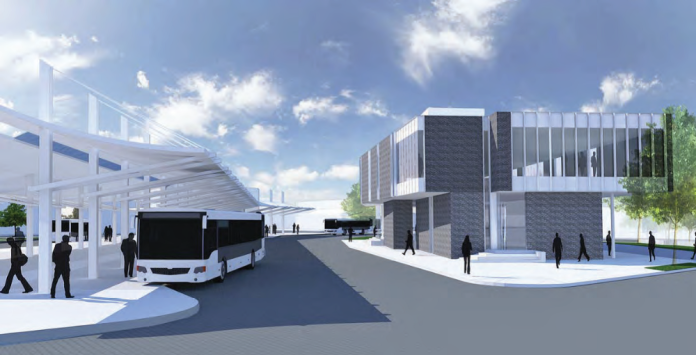A fare-free system could be headed to Thurston County. Intercity Transit will consider a demonstration project for a five-year fare-free bus network, which could be implemented as soon as January 1, 2020. Going fare-free will not result in any service reductions, and the agency thinks it may come out ahead in the long turn. The Intercity Transit Board will hold a public hearing on the issue this Wednesday (November 20th) and consider approval at a December 4th meeting.
Update: On December 4th, the board approved the fare-free pilot, which goes in to effect on January 1, 2020.
Fare-transit has been a growing issue nationally and abroad as communities tackle income inequality, air pollution, and congestion. Estonia recently implemented a nationwide fare-free transit program. Paris made transit fare-free to youth this fall. Kansas City could America’s first major city to have a full transit system fare-free.
“[The community wants] us to move more people more quickly and reduce congestion. Frankly, zero-fare is probably the least expensive and most efficient way we can accomplish those goals.”
Ann Freeman-Manzanares, General Manager of Intercity Transit
Examples of fare-free transit in the Central Puget Sound region are fairly narrow. However, Sound Transit currently operates the Tacoma Link streetcar fare-free–charging a fare would likely substantially reduce ridership. That line, however, will see fares introduced once the line is extended in 2022. Island Transit also operates fare-free transit across its entire system. Washington State Ferries also technically provides fare-free rides for walk-on passengers depending upon direction, but ultimately roundtrip rides incur a fare.
Intercity Transit’s farebox recovery in recent years has been in the 6% to 7% range, but sales tax and grants cover the bulk of system operations, maintenance, and administration. Proposition 1, which voters passed last year, increased the sales tax within the county’s public transportation benefit area, allowing the transit agency to progressively improve service. One of those improvements came last Monday with the launch of a new frequent bus route called The One, which also benefits from a new bus lane, queue jump, and expanded transit center in downtown Olympia.

The King County Council, by contrast, has passed a farebox recovery target of 25%, which blocks King County Metro from implementing widespread fare reductions, let alone going entirely fare-free. Hence Metro actually increased fares (while lowering some multi-zone peak fares) by flattening its fare to $2.75 last year.
Intercity Transit currently charges a $1.25 per ride for local adult and youth fares (or $2.50 for an all-day local pass per day and monthly passes are $36 for adults and $15 for youth). Fares are higher for express routes and reduced fares are an option for qualifying riders. The transit agency is somewhat unique amongst local transit providers in the region in that it does not participate in the ORCA (One Regional Card for All) system. The system allows cardholders to use a single electronic fare media card to pay fare on participating transit agency’s services.
In a press release, Ann Freeman-Manzanares, the General Manager of Intercity Transit said, “It’s clear the community has bigger plans for transit. They want us to move more people more quickly and reduce congestion.” She added, “Frankly, zero-fare is probably the least expensive and most efficient way we can accomplish those goals.”
Intercity Transit has cited several reasons for migrating to a fare-free transit system. One of those is that transit ridership in many systems have dramatically increased after eliminating fares. Ridership increases after eliminating fares have ranged from 20% to 60%, the agency said.
Another reason is that upgrading fare collection boxes or purchasing a new fare media system would be expensive in its own right. Existing fare collection boxes used by Intercity Transit are largely obsolete. Buying into the ORCA system would cost millions of dollars and not worth an immediate investment since the Next Generation ORCA program—a full replacement of the ORCA system, equipment, and vendor—is due to be implemented in the next few years.
Everett Transit, a comparably small transit provider in Snohomish County, is spending $1.5 million for its share in Next Generation ORCA. Additionally, the ORCA governance approach and reimbursement methodology may be further expenses that make participation less appealing.
Intercity Transit fundamentally believes that going fare-free is a more just, economical, and efficient option to continuing fare collection. Eliminating fares means that more riders will be able to have access to transit, removing the barrier that fares can present. Eliminating fare collection also means that the transit agency will have less administration costs associated with fare collection and reduce the delay of dwell times associated with people paying for their rides.
Last year, David Gordon authored an article published on The Urbanist that advocated for regional fare-free transit. His approach was different in that he argued that a small payroll tax should pay for the cost of eliminating fares and that a more robust transit expansion should be coupled with its elimination. But the fundamental reasons for the paradigm shift to fare-free transit appears to be similar to Intercity Transit’s. If Intercity Transit approves fare-free transit, it will be a valuable case study to analyze for how fare-free transit performs across social, environmental, and economic metrics. It may also cement its place as a transit innovator in the region.
Those interested can share feedback by emailing tellus@intercitytransit.com.
Stephen is a professional urban planner in Puget Sound with a passion for sustainable, livable, and diverse cities. He is especially interested in how policies, regulations, and programs can promote positive outcomes for communities. With stints in great cities like Bellingham and Cork, Stephen currently lives in Seattle. He primarily covers land use and transportation issues and has been with The Urbanist since 2014.


